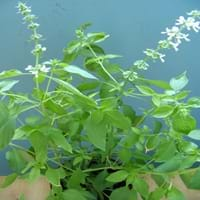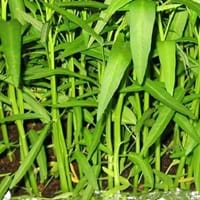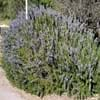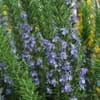Life Span
Perennial
Annual and Perennial
Origin
Hybrid origin
India
Types
Not available
Not Available
Habitat
Not Available
subtropical regions, Tropical regions
USDA Hardiness Zone
9-11
8-15
Sunset Zone
A1, A2, A3, H1, H2, 1a, 1b, 2a, 2b, 3a, 3b, 4, 5, 6, 7, 8, 9, 10, 11, 12, 13, 14, 15, 16, 17, 18, 19, 20, 21, 22, 23, 24
21,22
Habit
Clump-Forming
Spreading
Flower Color
White
White, Lavender
Flower Color Modifier
Bicolor
Not Available
Fruit Color
Tan
Green, Reddish Plum
Leaf Color in Spring
Green, Gray Green
Green
Leaf Color in Summer
Green, Gray Green
Green
Leaf Color in Fall
Green, Gray Green
Green
Leaf Color in Winter
Light Green
Green
Leaf Shape
Oval
Long Elliptic
Plant Season
Spring, Summer, Fall, Winter
Spring, Summer, Fall, Winter
Sunlight
Full Sun, Partial Sun
Full Sun, Partial Sun
Growth Rate
Fast
Very Fast
Type of Soil
Loam, Sand
Clay, Loam, Sand
The pH of Soil
Neutral
Acidic, Neutral, Alkaline
Soil Drainage
Well drained
Poorly Drained
Bloom Time
Indeterminate
Indeterminate
Tolerances
Drought
Wet Site
Where to Plant?
Container, Ground, Pot
Container, Ground, Pot
How to Plant?
Cuttings, Seedlings
Seedlings
Plant Maintenance
Medium
Medium
Watering Requirements
Allow soil to be completely dry in between waterings, Do Not over Water, Requires regular watering
Requires regular watering
In Summer
Lots of watering
Lots of watering
In Spring
Moderate
Moderate
In Winter
Average Water
Average Water
Soil pH
Neutral
Acidic, Neutral, Alkaline
Soil Type
Loam, Sand
Clay, Loam, Sand
Soil Drainage Capacity
Well drained
Poorly Drained
Sun Exposure
Full Sun, Partial Sun
Full Sun, Partial Sun
Pruning
Remove damaged leaves, Remove dead branches, Remove dead leaves
Remove damaged leaves, Remove dead branches, Remove dead leaves
Fertilizers
All-Purpose Liquid Fertilizer
All-Purpose Liquid Fertilizer
Pests and Diseases
Downy mildew, Dry root rot, Fusarium wilt, Gray mold, Japanese Beetles
Bacterial leaf spot, Damping-off, Root rot
Plant Tolerance
Drought
Drought
Flower Petal Number
Single
Single
Fragrant Bark/Stem
Yes
No
Foliage Texture
Medium
Medium
Foliage Sheen
Matte
Matte
Attracts
Aphids, Beetles, Leaf Hoppers, Nematodes
Birds, Hens
Allergy
Hives, Itchiness, Rash, Swelling
Not Available
Aesthetic Uses
Borders, Used for decorating walls, fences, gates, hedges, etc.
Farmland
Beauty Benefits
Not Available
Not Available
Environmental Uses
Air purification
Air purification
Medicinal Uses
Low calories, Manganese, Potassium, ß-carotene, Vitamin A, Vitamin K
Anti-ageing Benefits, Antidiabetic, Reduces toothache, Skin Diseases
Part of Plant Used
Leaf Stalks, Leaves
Leaves, Shoots, Stem
Other Uses
Added to salads, Powdered and mixed with tea, Used in tea, wine and sweet dishes, Used to flavour soups
Used in curries, soups, stews
Used As Indoor Plant
Yes
Sometimes
Used As Outdoor Plant
Yes
Yes
Garden Design
Container, Edible, Herb / Vegetable, Mixed Border
Edible, Herb / Vegetable, Tropical, Water Gardens
Botanical Name
OCIMUM x citriodorum
IPOMOEA aquatica
Common Name
Lemon Basil
Swamp Cabbage, Swamp Morning Glory, Water Spinach
In Hindi
नींबू तुलसी
Water Spinach
In German
Limonenbasilikum
Wasser-Spinat
In French
citron basilic
Épinards d'eau
In Spanish
Ocimum × citriodorum
La espinaca de agua
In Greek
λεμόνι βασιλικός
Σπανάκι νερό
In Portuguese
manjericão limão
Espinafre de água
In Polish
Bazylia cytrynowa
Szpinak wodny
In Latin
lemon Basilius
Water Spinach
Phylum
Tracheophyta
Spermatophyta
Class
Magnoliopsida
Magnoliopsida
Family
Lamiaceae
Convolvulaceae
Clade
Asterids
Angiosperms, Asterids, Eudicots
Tribe
Not Available
Ipomoeeae
Subfamily
Not Available
Not Available
Number of Species
Not Available
Importance of Lemon Basil and Water Spinach
Want to have the most appropriate plant for your garden? You might want to know the importance of Lemon Basil and Water Spinach. Basically, these two plants vary in many aspects. Compare Lemon Basil and Water Spinach as they differ in many characteristics such as their life, care, benefits, facts, etc. Every gardener must at least have the slightest clue about the plants he wants to plant in his garden. Compare their benefits, which differ in many ways like facts and uses. The medicinal use of Lemon Basil is Low calories, Manganese, Potassium, ß-carotene, Vitamin A and Vitamin K whereas of Water Spinach is Anti-ageing Benefits, Antidiabetic, Reduces toothache and Skin Diseases. Lemon Basil has beauty benefits as follows: Not Available while Water Spinach has beauty benefits as follows: Not Available.
Compare Facts of Lemon Basil vs Water Spinach
How to choose the best garden plant for your garden depending upon its facts? Here garden plant comparison will help you to solve this query. Compare the facts of Lemon Basil vs Water Spinach and know which one to choose. As garden plants have benefits and other uses, allergy is also a major drawback of plants for some people. Allergic reactions of Lemon Basil are Hives, Itchiness, Rash and Swelling whereas of Water Spinach have Not Available respectively. Having a fruit bearing plant in your garden can be a plus point of your garden. Lemon Basil has no showy fruits and Water Spinach has no showy fruits. Also Lemon Basil is not flowering and Water Spinach is not flowering . You can compare Lemon Basil and Water Spinach facts and facts of other plants too.





